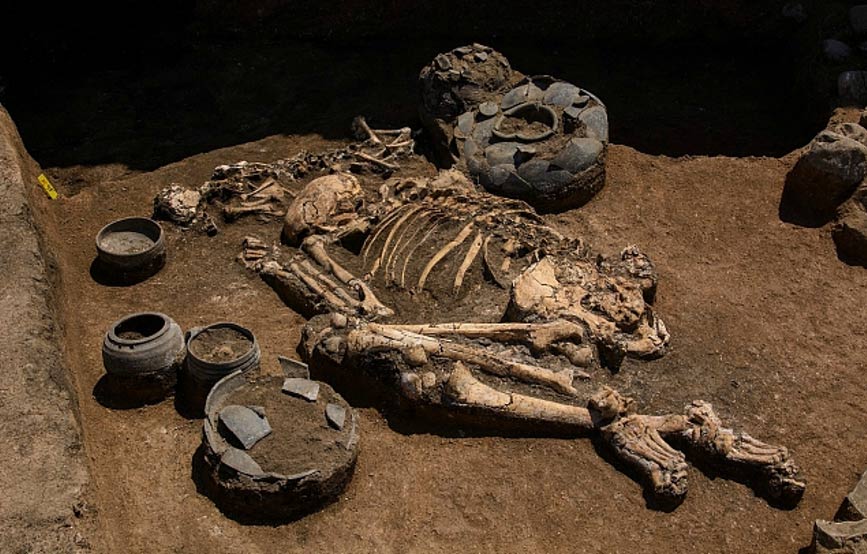Largest Ancient Settlement of South Caucasus Discovered from Satellite Photos
A military commander killed in battle with the arrowhead still lodged in his thorax is one of the interesting finds by archaeologists at the largest prehistoric settlement discovered in the South Caucasus. The site dates back at least 3,300 years and has been yielding interesting burials, artifacts and architectural features, including a huge wall and waterworks.
The village at Didnauri in the nation of Georgia, about 150 km (93 miles) east of Tbilisi, is encompassed by a wall 1.7 km long (about 1 mile) and 7 meters (23 feet) wide.
When the discovery was made last year from satellite photographs, scholars said it could push back the establishment of an ancient civilization in the region, but they did not give a time frame.
In a tantalizing bit of information in an article on Agenda.ge, it states:
In one of the most unique findings, a grave of a military commander was unearthed in the area. The remains of the ancient warrior featured an arrowhead in their stomach area, while a 13th Century BC bronze dagger was buried next to the individual. History experts said the arrowhead found in the remains did not resemble those made in the Caucasus region.
The article does not speculate about where the arrowhead was made. One can only wonder if the people of Didnauri did battle with warriors from another part of the world that killed the commander. Because of the Caucasus’ location, hostile forces could have come from Europe, Asia Minor, West Asia or the Middle East.

The apparent warrior or commander had a bronze dagger buried with him. Archaeologists found an arrowhead of unknown origin lodged in his thorax. (Photo by the Georgia Ministry of Culture and Monument Protection)
Archaeologists found three other graves under a layer of stone. They also have discovered fragments of stone construction within the walls of the settlement.
Experts discovered the site in 2015 using satellite photos of the area. Extensive archaeological excavations were undertaken at the site and will continue for the rest of this year, Georgia’s Ministry of Culture and Monument Protection said.
Researchers have identified a water-supply system, buildings that served a ritual or religious purpose at Didnauri. They have also found fragments of bronze artifacts, clay vessels and stone weapons.

Archaeologists unearthed these fine clay vessels at the site, which was discovered from satellite photographs. (Photo by the Georgia Ministry of Culture and Monument Protection)
In the history of the southern Caucasus, this site of Didnauri may have arisen after there was a flourishing and then a decline of civilization in the region. By the end of the 2 nd millennium BC, the Iron Age began here, when weapons and tools were made in larger numbers and of finer quality.
The bronze dagger found in the commander’s tomb was just that—bronze—but it dates to the 1,300 BC or so—well after the Iron Age began. Local chieftains, who from their burials appeared to have riches and power, were in contact with the more advanced Akkadians of Mesopotamia. But in the eastern Caucasus, crude civilization gradually declined around 2300 BC and disintegrated into regional cultures.
The article on Agenda.ge does not refer to this, but one of these cultures was the Bedenis of eastern Georgia of around 2300 BC. Another culture in eastern Georgia was the Trialeti, who were at their height around 1500 BC and who built kurgans or burial mounds.
All that said, humans have been in Georgia for an extremely long time. Fossils of Homo erectus dating back 1.8 million years have been found there.
Top image: One of the burials at Didnauri, the largest Bronze Age settlement ever discovered in the southern Caucasus. This burial predates the 3,100-year-old wall around the settlement by about about 200 years. (Photo by the Georgia Ministry of Culture and Monument Protection)
By Mark Miller

















